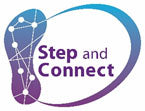Memory-Boosting Sequence Stepping Exercise: A Fun Balance Challenge
This exercise is inspired by Khalaji et al.'s (2024) study on optimizing motor learning for older adults, incorporating key principles from the OPTIMAL Theory.
How to Do It:
1. Set Up the Mat: Arrange the Balance Matters footpads on the mat, each representing a different stepping zone. For a starting point, you can use liquid chalk to write numbers on the footpads or start with fewer footpads to make memorization easier. Ensure the distance and width between the footpads are properly adjusted.
2. Incorporate Autonomy: Allow your client to choose the color and positioning of the footpads. Giving them this choice adds a personal touch, enhancing their motivation and focus.
3. Demonstrate the Sequence: Show your client the stepping sequence and have them practice it twice. Use the External Focus of Attention technique: Encourage them to focus on stepping onto the footpads (the target) rather than on the movement itself.
4. Memorize the Sequence: Have your client look at the sequence, memorize it, and then perform it four times. This engages memory and focus, enhancing cognitive and motor skills.
5. Change the Sequence: After practicing, challenge them with a new sequence. This keeps the exercise engaging and promotes continual improvement. Have them try different sequences—stepping forward, backward, laterally, and obliquely—to work on balance and agility.
6. Provide Positive Feedback: Offer encouraging comments like, “You’re doing great, better than average!” after every four trials to boost confidence and motivation.
7. Tips for Success: If your client struggles with memorization, suggest they start by memorizing only four steps and gradually add more once they feel comfortable. They can also look at the handout.
Download Free Handout Here
________________________________________
The "Why" Behind It:
This exercise is based on the square-stepping task (Shigematsu & Okura, 2006), which involves quick, multidirectional movements (forward, backward, lateral, oblique) and smooth weight shifts. It was designed to improve balance, agility, and walking speed. Shigematsu et al. (2008) found that improvements in these areas were linked to a decrease in falls.
We’ve translated this research and adapted the mat used in the study to work with the Balance Matters System. This modification makes it easy to replicate the exercise in clinic settings, providing a practical solution for balance training that can be used with your clients.
The OPTIMAL Theory of motor learning (Lewthwaite & Wulf, 2016) is central to this exercise, incorporating three key principles:
1. Autonomy Support (AS): Allowing clients to choose the footpad colors gives them a sense of control, which is a powerful motivator. Autonomy encourages engagement and adherence, making the exercise more enjoyable and sustainable.
2. External Focus (EF): Shifting the focus to stepping onto the footpads, rather than staying within the squares, enhances performance. An external focus—focusing on the goal rather than the movement itself—has been shown to improve motor learning and balance performance.
3. Enhanced Expectancies (EE): Providing positive feedback after every 4 trials builds confidence and motivates clients to continue. This reinforces the expectation of success, which encourages further effort and progress in balance training.
________________________________________
The Research Connection:
Khalaji et al. (2024) found that incorporating motivational and attentional strategies improved performance in motor-cognitive tasks, particularly for older adults. These factors enhance walking speed, balance, and mobility, which translates into real-world benefits, including a reduced risk of falls.
So, next time you’re in the clinic, try Memory-Boosting Sequence Stepping Exercise with your clients. It’s a fresh, research-backed way to make balance training more engaging and effective. Let's get those feet moving in the right direction—toward improved balance and confidence!
References:
Khalaji, Z., Alhosseini, M. N., Hamami, S. S., Iwatsuki, T., & Wulf., G. (2024). Optimizing motor learning in older adults. Journal of Gerontology, Series B: Psychological Sciences and Social Sciences, 79, 1-7.
Shigematsu, R., & Okura, T. (2006). A novel exercise for improving lower-extremity functional fitness in the elderly. Aging Clinical and Experimental Research, 18(3), 242–248. https://doi.org/10.1007/BF03324655
Shigematsu, R., Okura, T., Nakagaichi, M., Tanaka, K., Sakai, T., Kitazumi, S., & Rantanen, T. (2008). Square-stepping exercise and fall risk factors in older adults: A single-blind, randomized controlled trial. The Journals of Gerontology, Series A: Biological Sciences
and Medical Sciences, 63(1), 76–82. https://doi.org/10.1093/gerona/63.1.76
Wulf, G., & Lewthwaite, R. (2016). Optimizing performance through intrinsic motivation and attention for learning: The OPTIMAL theory of motor learning. Psychonomic Bulletin & Review, 23(5), 1382–1414. https://doi.org/10.3758/s13423-015-0999-9
